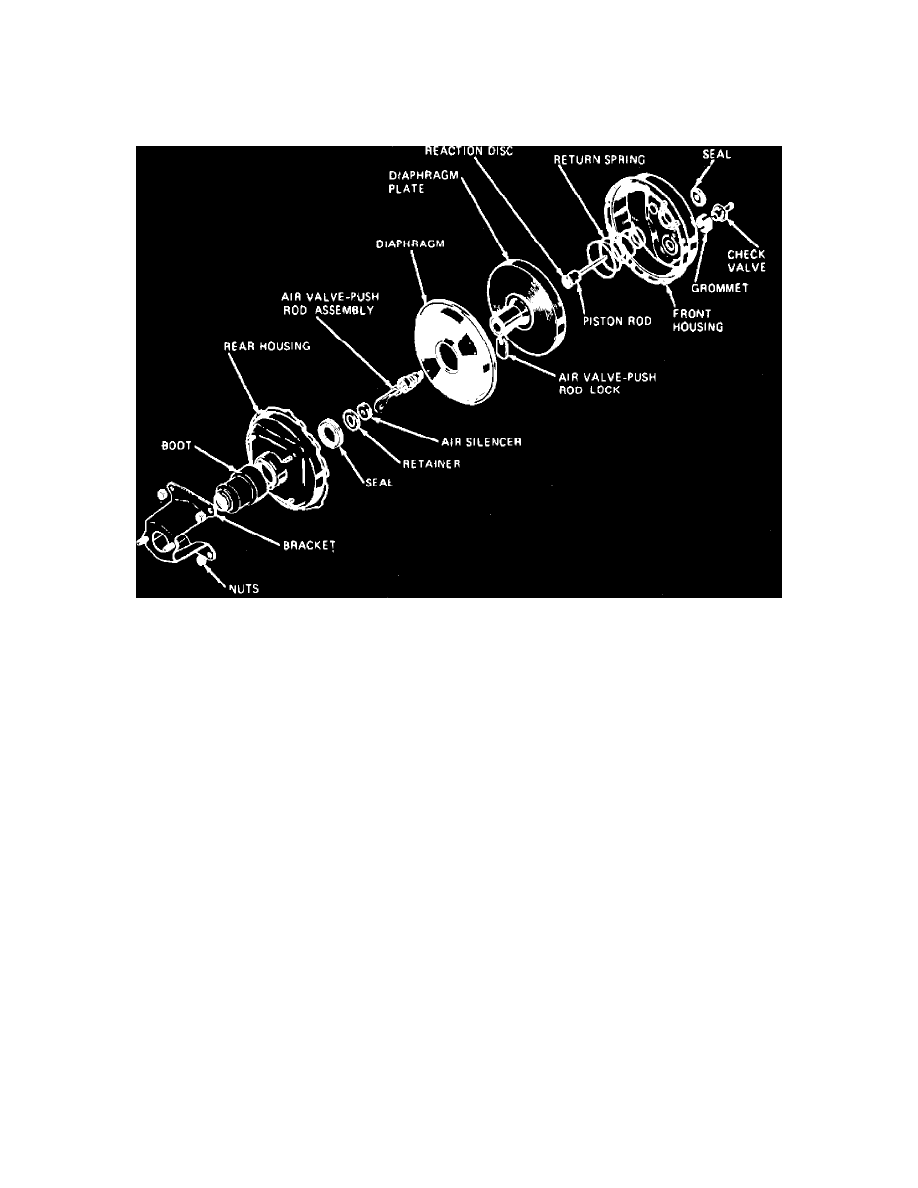Skylark V6-173 2.8L VIN X 2-bbl (1984)

Vacuum Brake Booster: Description and Operation
Bendix Diaphragm Type
Description
Fig. 3 Bendix single diaphragm power brake unit
This unit is of the vacuum suspended single diaphragm type, Fig. 3. The vacuum suspended diaphragm type units utilize engine manifold vacuum
and atmospheric pressure for its power. It consists of three basic elements combined into a single power unit. The three basic elements of the single
diaphragm type are:
1.
A vacuum power section which includes a front and rear shell, a power diaphragm, a return spring and a pushrod.
2.
A control valve, built integral with the power diaphragm and connected through a valve rod to the brake pedal, controls the degree of brake
application or release in accordance with the pressure applied to the brake pedal.
3.
A hydraulic master cylinder, attached to the vacuum power section which contains all the elements of the conventional brake master cylinder
except for the pushrod, supplies fluid under pressure to the wheel brakes in proportion to the pressure applied to the brake pedal.
Operation
Upon application of the brakes, the valve rod and plunger move to the left in the power diaphragm to close the vacuum port and open the atmospheric
port to admit air through the air cleaner and valve at the rear diaphragm chamber. With vacuum present in the rear chamber, a force is developed to move
the power diaphragm, hydraulic pushrod and hydraulic piston or pistons to close the compensating port or ports and force fluid under pressure through
the residual check valve or valves and lines into the front and rear wheel cylinders to actuate the brakes.
As pressure is developed within the master cylinder a counterforce acting through the hydraulic pushrod and reaction disc against the vacuum power
diaphragm and valve plunger sets up a reaction force opposing the force applied to the valve rod and plunger. This reaction force tends to close the
atmospheric port and reopen the vacuum port. Since this force is in opposition to the force applied to the brake pedal by the driver it gives the driver a
``feel'' of the amount of brake applied. The proportion of reactive force applied to the valve plunger through the reaction disc is designed into the
Master-Vac to assure maximum power consistent with maintaining pedal feel. The reaction force is in direct proportion to the hydraulic pressure
developed within the brake system.
